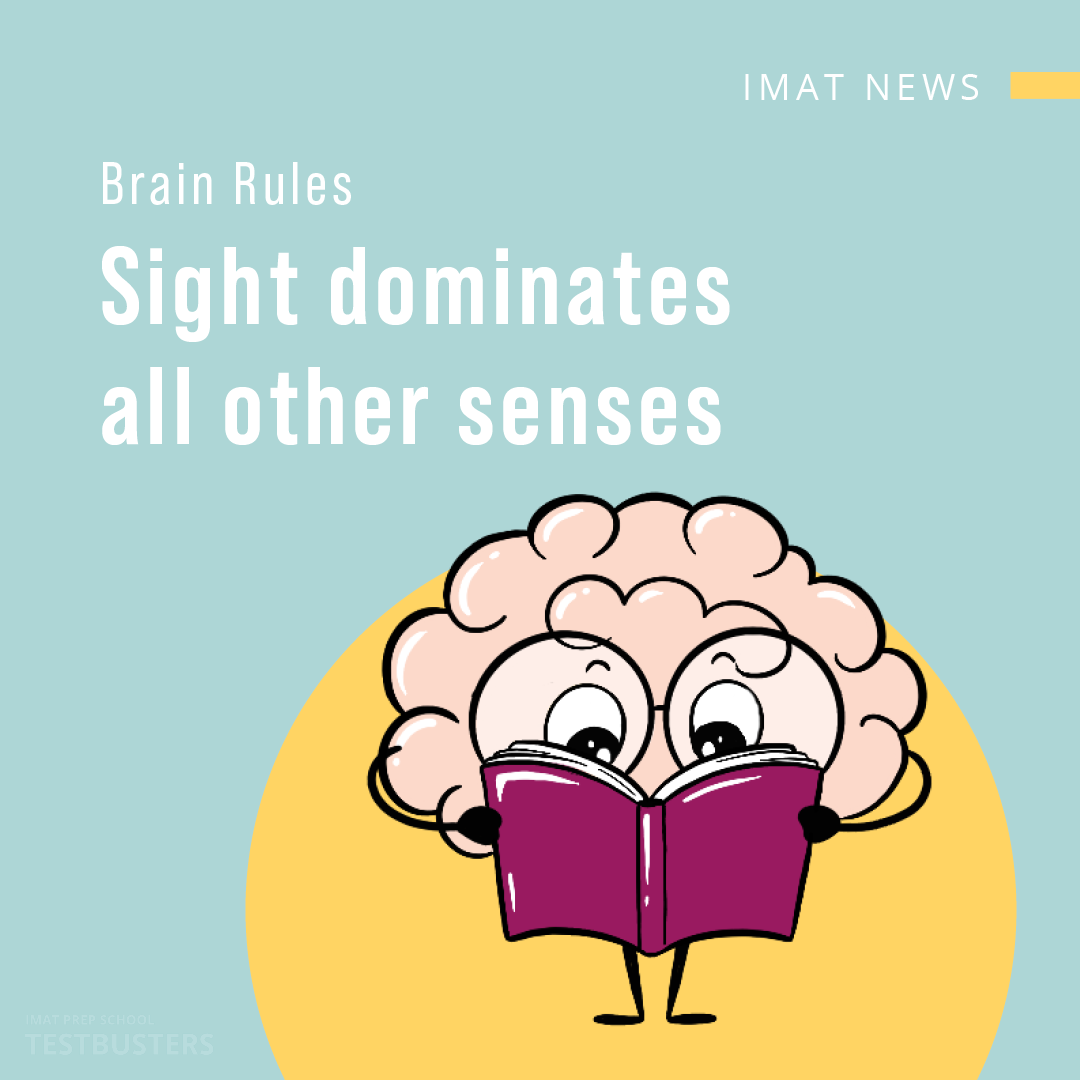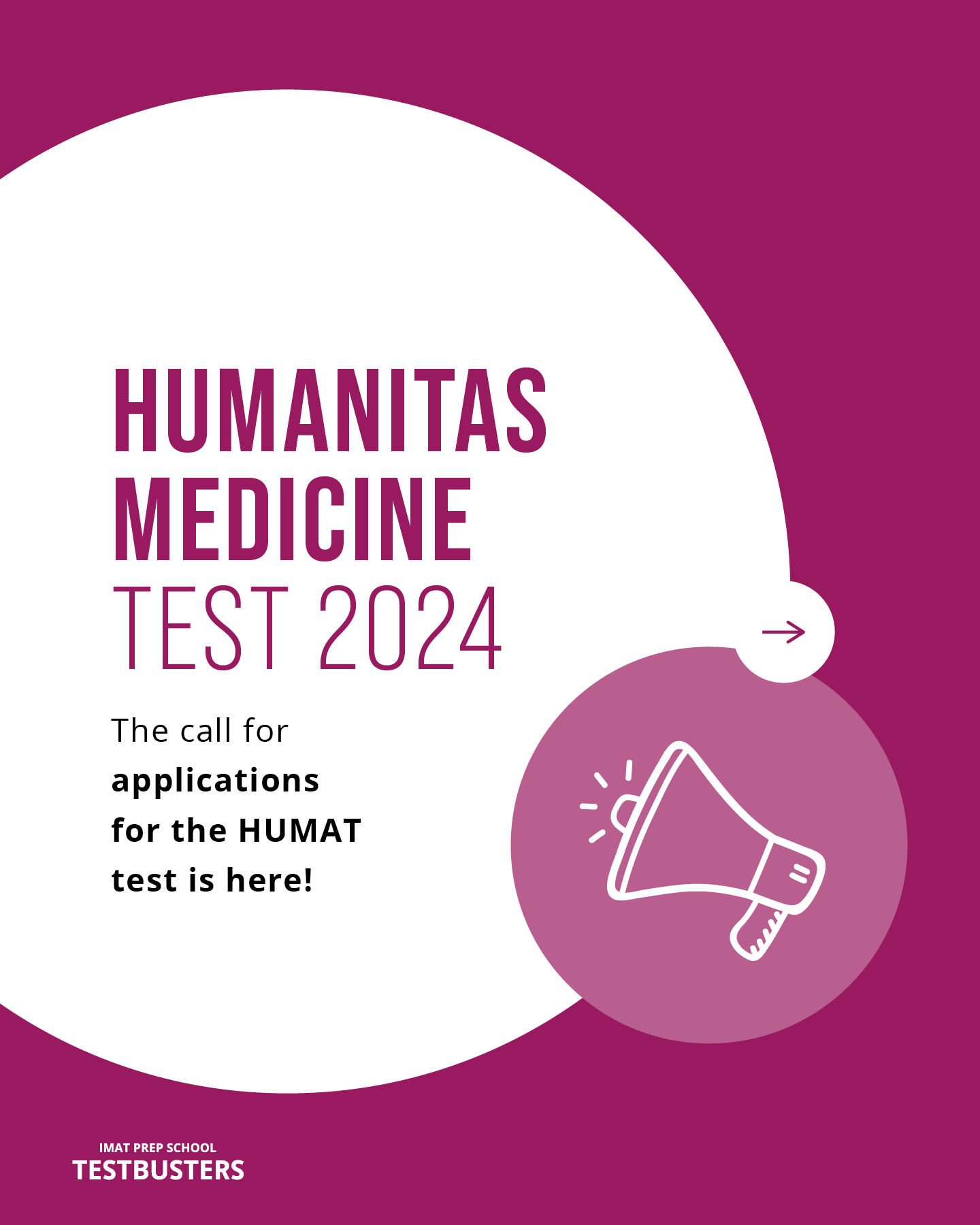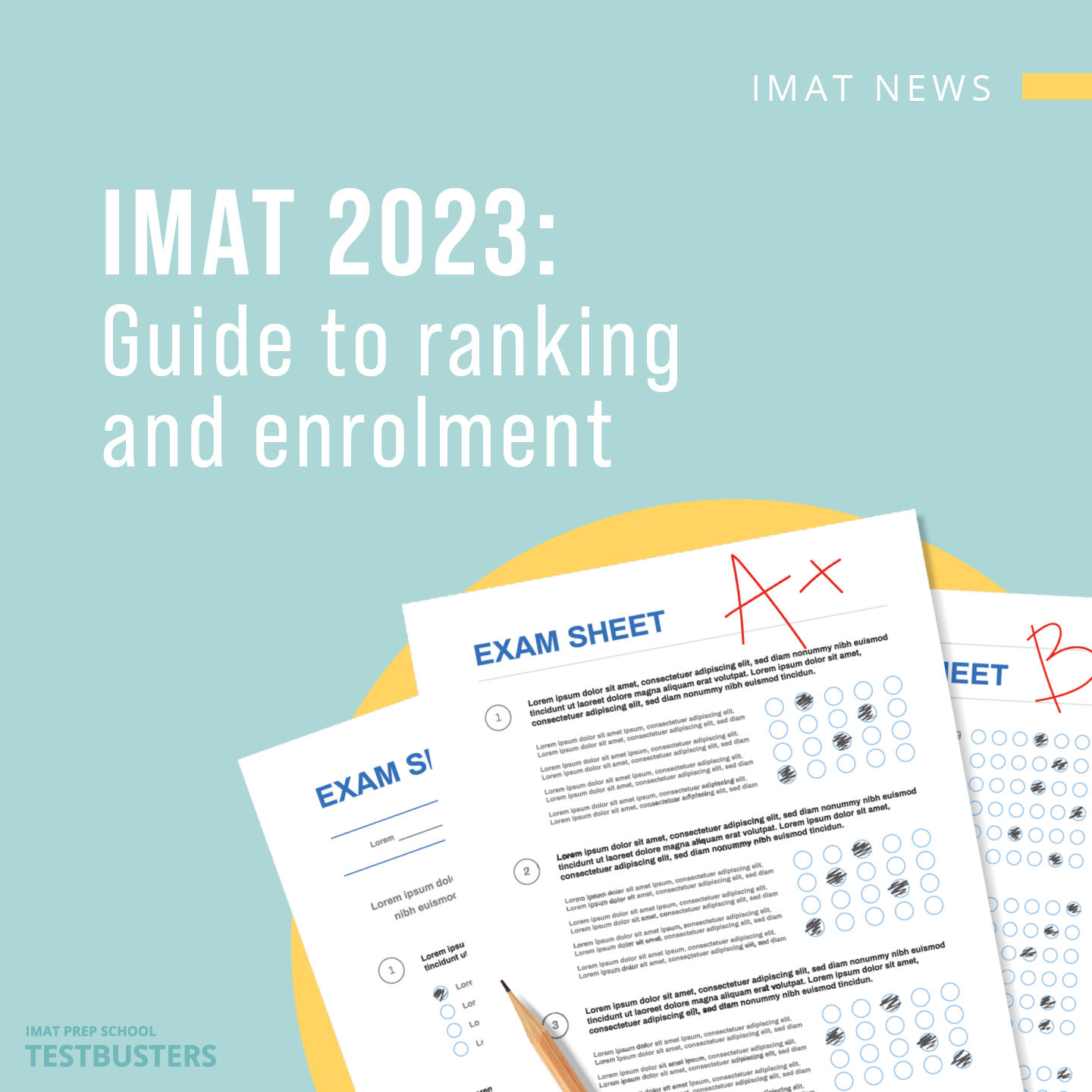Sight dominates all other senses and is the best tool for learning. Studying books and summaries, with ‘x’ amount of time available, produces good or bad results (that depends on you), but studying the same things, in the same amount of time, with the help of pictures and diagrams will produce better results. Trust us on this!
On this new episode of ‘Brain Rules’ we’ll talk about sight: how it works, the implications it has on our brain and how to set up a study method that relies on visual learning, which will provide a much needed help in taking the admission test. Before diving into the triangle sight-learning-study, however, let’s briefly try to figure out how sight works.
How does sight work
Colours, images, contours, are entirely reproduced by our visual cortex, which interprets visual messages coming from the eyes. This means that, even if our eyes were healthy, we still wouldn’t be able to see with a damaged cortex.
When we look at something, light enters the eye, is bent by the cornea, travels to the lens, where it is focused, and hits the retina (a layer formed by a group of neurons located at the back of the eye). The collision generates electrical signals that reach deep into the brain by travelling along the optic nerve. At this point, the brain interprets the electrical information by which we see.
We watch through our eyes but we see with our brain.
As you can see, it is a fairly complex process and the representation of reality that derives from this is not 100% reliable. It’s like the experience we have of the environment that surrounds us is more like an opinion of what our brain believes to be out there. Our circuits of ’identification’ of an object, or a person, depend on a pre-acquired experience, that is why whenever we face something/someone we do not know, we tend to compare it/them to things we are familiar with.
A clarification is in order: before sending anything to the brain, it seems that the retina quickly processes electrical signals. These are in fact interpreted by nerve cells within the retina itself, that assemble them into traces. Each trace (there can be up to twelve in the retina) corresponds to a ‘part’ of what we are observing.
The traces, via the optic nerve, reach the thalamus (the structure that acts as a sorting centre for most of the senses), and then travel along neural paths until they flow into an inner area of the occipital lobe called the ‘visual cortex’. Now the brain can reassemble the information: the analyses produced will be sent to the higher brain centres, which will integrate them at increasingly sophisticated levels.
The information is divided between two major neural pathways:
- the ventral visual pathway, that recognises shapes and colours.
- the dorsal visual pathway, that identifies the placement and possible motion of an object.
Associative regions integrate the various electric signals, allowing us to finally see. After this not-so-brief introduction on how sight works, let’s dive into some tips and suggestions on how to better prepare for the admission test.
Quick rules for studying
One of the most efficient ways of proving to you the importance of sight is looking at its effects on learning. As we’ve anticipated, sight is the best tool for learning. Texts and images, however, follow different rules. Let’s go through some of them:
- The more visual the input becomes, the more likely it is to be recognised and remembered: this is a phenomenon known as the PSE (picture superiority effect). For this reason in Testbusters books, we always try to present information and data to the reader with the use of diagrams and pictures. Still sceptical? A study has shown how people would remember more than 2500 pictures with a 90% accuracy and several days after looking at them with a 10 second time of exposition for each picture. A year later, those same people would remember the pictures with a 63% accuracy.
- Differently, oral presentations are less efficient: after 72 hours we tend to remember approximately 10% of an oral presentation. If an image is added to the presentation, this percentage increases up to 63%.
- Written text, on the other hand, has a low effectiveness: one of the reasons lies in the fact that the brain sees words as many small pictures. Fun fact: for our cerebral cortex words do not exist! The image is therefore a more effective information transfer mechanism than the text. And it also requires less effort.
- Images capture more attention: a study was carried out using infrared eye-tracking technology, capable of detecting eye movements, in order to verify the initial effect of images on attention. The sample consisted of 3600 consumers subjected to 1363 printed commercials. This study showed that picture information was superior in capturing the attention of individuals.
Thus, we can conclude that retention of information is greater when acquired via pictures and diagrams. Let’s use as an example this list of hormones:
- Somatotropin (SH or GH)
- Prolactin (PRL)
- Corticotropin (ACTH)
- Follicle-stimulating hormone (FSH)
- Luteinizing hormone (LH)
- Thyrotropin (TSH)
You’ll find these hormones harder to remember when written as a list rather than when conveyed through a diagram or a picture. This is the idea on which documents are based and it’s the reason why a docu-pic will come across as more interesting to us and also easier to remember.
We have mainly discussed the inefficacy of text, yet some differences exist even within texts: a more concrete text, as a description or a narration, will prove to be more helpful, when studying, than a more verbose one.
Take home message: less text, more pictures.



